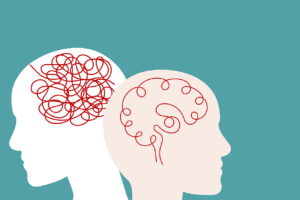
Cannabis use in older adults: State of the evidence
Older adults are becoming increasingly interested in using cannabis, a psychoactive plant from the Cannabis sativa family, for both recreational and medicinal purposes. According to recent surveys conducted by the Colorado Department of Public Health and Environment, older adults in Colorado are the fasted-growing population of cannabis adopters than any other age group, doubling from 2.4% older adult users in 2014 to 5.6% in 2017. But with cannabis being a classified substance, there are limitations on what research can be done on the plant, leaving researchers and providers without a clear understanding of the benefits and consequences that come with cannabis use.
However, a universal fact of cannabis is its chemical composition. Again, “cannabis” refers to all products made from the Cannabis sativa plant. “Marijuana” specifically refers to the psychoactive component of cannabis that creates the feeling of “being high,” which is attributed to a compound known as tetrahydrocannabinol. THC content varies depending on how the plant is produced; Cannabis sativa plants that are low in THC are used as industrial hemp in products and do not produce a high when used.
Cannabidiol is another compound found in the cannabis plant that may help ease the body without the sensation of “getting high” because CBD is inherently non-psychoactive. Both THC and CBD have the same chemical structure — 21 carbon atoms, 30 hydrogen atoms, and 2 oxygen atoms — though the two compounds are arranged differently, which accounts for their differing effects on the body. These natural compounds mimic the neurotransmitters in the body known as endocannabinoids, which are involved in processes linked to sleep, anxiety, appetite, and more.
Understanding the distinction between THC and CBD, as well as psychoactive and non-psychoactive forms of cannabis, is important when researching cannabis.
What We Currently Know
With cannabis classified as a schedule one substance under federal law and various levels of its legalization across the country, there are restrictions for researchers attempting to study cannabis, but there are a few generally accepted facts.
Older adults and younger adults report similar motivations behind their use of medical cannabis. People tend to seek out medical cannabis to help manage pain, side effects of chemotherapy, epilepsy, seizures, nausea, Alzheimer’s, insomnia, depression, anxiety, and many other conditions. Both CBD and THC have been associated with a reduction in these symptoms, but the effectiveness of cannabis use for medical conditions like these is murky due to the lack of research on the subjects.
There are numerous side effects to cannabis use that have shown up in studies. The U.S. Food and Drug Administration has approved only a few cannabis-derived and cannabis-related drugs: dronabinol (Marinol, Syndros), nabilone (Cesamet) and cannabidiol (Epidiolex). These are used for minimizing the side effects of chemotherapy, the treatment of anorexia in people with AIDS, and severe epilepsy in children.
One big risk for older adults using cannabis is the combination of cannabis with other prescription medications. Drug interactions between medications and cannabis could cause adverse effects that make the individual’s experience with cannabis ineffective. Danielle Fixen, a pharmacist at the UCHealth Seniors Clinic, recommends that older adults who are using cannabis use small amounts, proceed with caution, and talk to professionals honestly about what medications they are taking in order to receive sound and informed advice.
A 2021 study published in the journal Brain Sciences explored how THC affects younger and older adults and whether there is a difference between the two age groups. The study showed that both younger and older adults experienced the same levels of intoxication; one group did not report feeling “higher” than the other. Additionally, the study suggests that younger adults are more susceptible to the emotional and cognitive effects of cannabis, whereas older adults seemed to feel more bodily effects, such as dizziness. Younger adults’ learning and cognitive tasks were more impacted than the same processes in older adults.
The study highlights the lack of current research on cannabis usage in older adults, though as adult populations become more interested in cannabis use, more investigation on its effects is drastically needed.
For now, if you or someone you know is interested in using cannabis to treat a condition, the best advice is to reach out to your doctor and let them know what you are thinking. Be honest with them about other medications that you are taking, and ask for recommendations on what type of cannabis you should be using. Make sure to ask what dosage is right for you and if you should be using THC or CBD.
ABOUT THE AUTHOR
Grace Weintrob is a junior majoring in Communication Studies with a minor in Stage, Sports, and Film Production at CSU. She is currently working as the digital media intern for the Columbine Health Systems Center for Healthy Aging.





